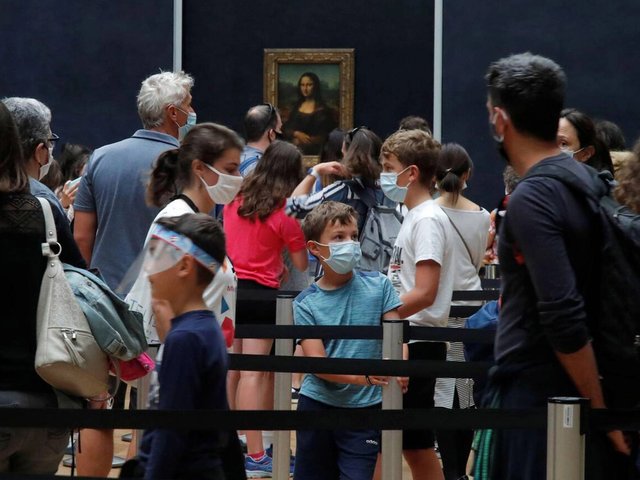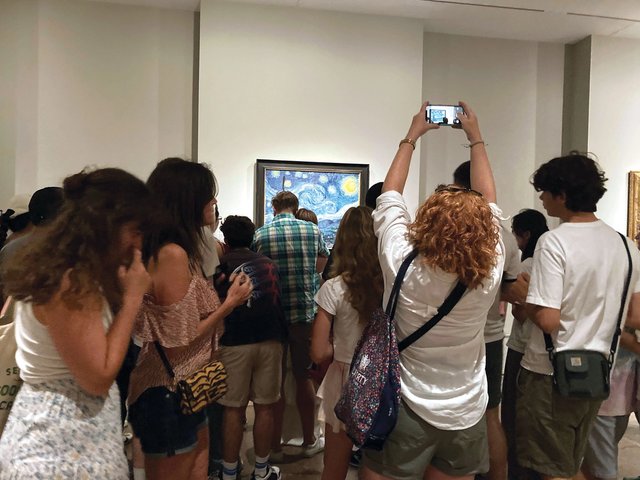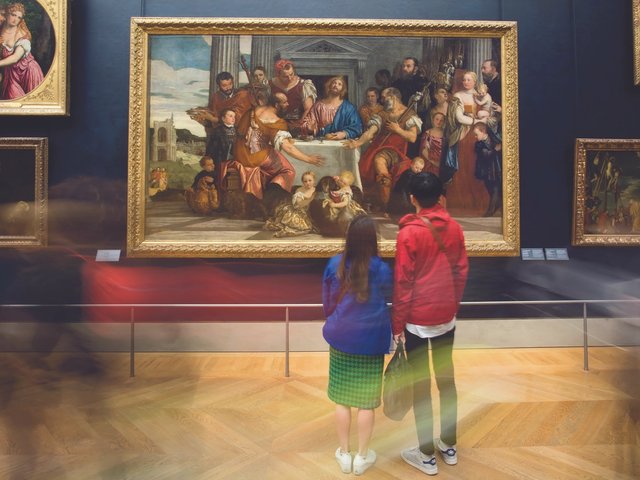Many museums lost visitors in 2024—and that is a good thing. Why? Because it shows that the slow build-back after the Covid-19 closures is over, and now museums are back at what we might consider their “natural level”, where visitor numbers are determined by factors such as the popularity of the programme, physical constraints or wider trends. We are once again starting to see numbers rise or fall by small amounts each year, but generally staying within a consistent range.
Take, for example, the Vatican Museum. It reported receiving 6.8 million visitors in 2024—less than a percentage point more than in 2023 and less than a percentage point down on 2019. To be precise, that is just 57,495 fewer visitors than before Covid-19, well within the margin of error. As the queues to see the Pope’s treasures never let up, we can be confident that the Vatican is operating at the peak of its capacity.
The Louvre lost 1% of visitors in 2024—but that is nothing to be worried about when the place is bursting at the seams with nearly nine million people
There is a similar story at our perennial number-one museum, the Musée du Louvre, which lost 1% of visitors in 2024—but that is nothing to be worried about when the place is bursting at the seams with nearly nine million people. In fact, “over attendance” is a problem at several Paris museums.
Goodbye, good times
Having too many people is a problem that some museums in London would love to have. There, the “new normal” is a bit more worrying. We have noted in previous years that many UK museums were finding it strangely difficult to recover the numbers lost to Covid-19. Now we need to start entertaining the possibility that some UK museums will not again reach the heady heights of the late 2010s for a while, if ever.
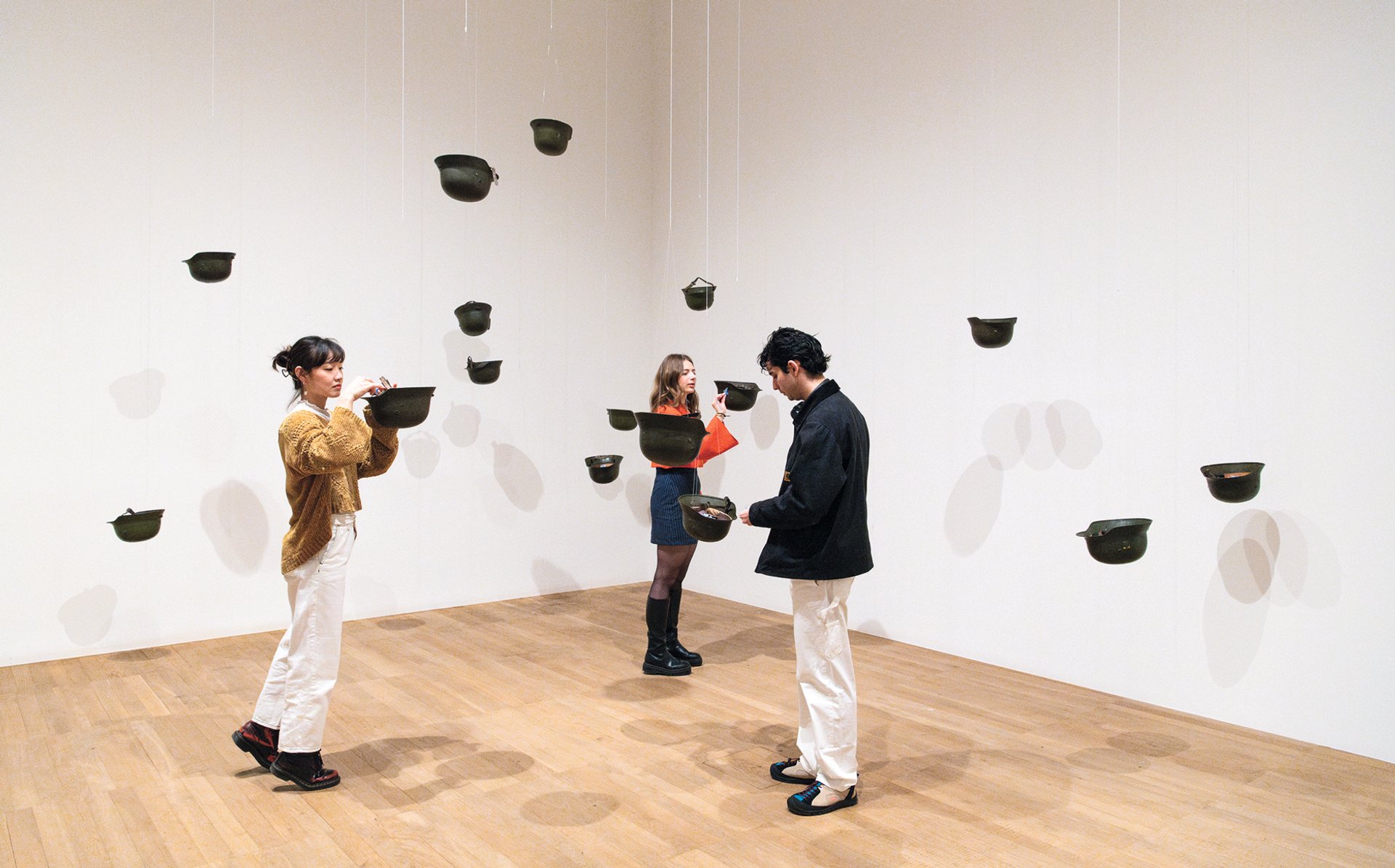
A numbers game: despite popular shows including Yoko Ono: Music of the Mind, Tate Modern’s 2024 attendance figure was only 4.6 million, 2.9% down on 2023 Photo: Lucy Green; © Tate
Tate Modern is a good example. When it opened 25 years ago, it had a transformative effect on the British cultural scene and shaped worldwide thinking about how art museums could operate. Tate expected only a couple of million visitors in its first year; it got 5.3 million. And they did not stop coming; in 2018 it beat the British Museum to be the most visited attraction in the UK, and in 2019, just before Covid-19, it received a record 6.1 million visitors. However, in 2024 Tate Modern recorded just 4.6 million visitors, which was actually 3% down on 2023 and a quarter less than its peak.
Despite holding its most attended temporary exhibition ever (Van Gogh: Poets and Lovers), the National Gallery was still 47% down on 2019
The same picture is replicated elsewhere. Tate Britain grew by 12% in 2024 but was still 32% down compared with 2019. The Royal Academy actually dropped 12% from 2023, receiving only half of its 2019 total. And despite holding its most attended temporary exhibition ever (Van Gogh: Poets and Lovers, with 335,000), the National Gallery grew less than 4%, still 47% down on 2019. That means that 2.8 million fewer people visited the National Gallery than in 2019—the biggest drop in absolute terms of any museum in our list for the third year running. The newly renovated Sainsbury Wing reopens in May, and the gallery will be hoping that this changes its fortunes.
This all matters for UK museums perhaps more than for others. In the late 1990s and early noughties, they pioneered a model for museum funding, where slick branding and sharp commercial activities made up for the relative lack of state and philanthropic financing. But this means that they are more vulnerable to a downturn in visitor numbers, and institutions like Tate are finding it hard to rebuild their pandemic-damaged finances.
What is the explanation? While Brexit is the obvious culprit for some commentators, and the rise of “woke” programming decisions for others, such diagnoses are complicated by the fact that some British museums are doing very well indeed. We only need to look at the British Museum itself, which received 6.5 million visitors—its best total since 2015 and placing it third on our list. Meanwhile, the Natural History Museum, not included in our survey, received 6.3 million and had a record number of visitors in its 2023-24 financial year. Perhaps the UK’s contemporary art boom has petered out and the audience is going back to the more traditional museum fare of mummies and dinosaurs.
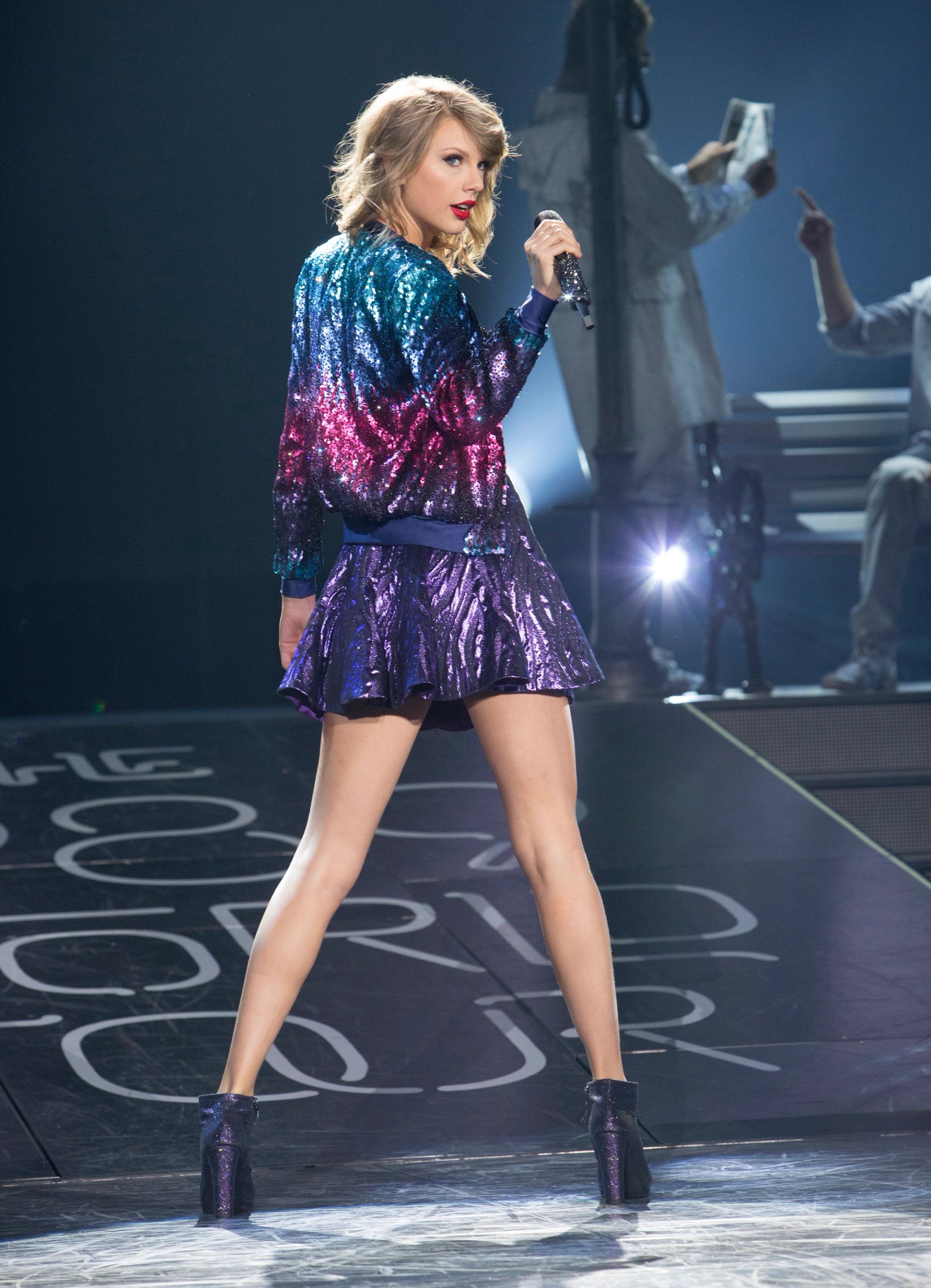
All change: A show of Taylor Swift’s costumes rewarded the V&A with a busy summer Courtesy of TAS Rights Management, LLC
One way to fight back seems to be to appeal beyond the traditional art audiences. The Victoria & Albert Museum in London rode the Taylor Swift bandwagon to its busiest summer since Covid-19, with a trail of the musician’s “iconic looks” bringing in the crowds. The multi-arts centre Somerset House received more than three million visitors, its highest since 2018, which it partly attributed to the popularity of its exhibition on “the irresistible force of cuteness in contemporary culture” and an accompanying coffee shop.
Look east
How about the new faces on the scene? With the confounding factors of the past few years, it has been hard to gauge how popular newly opened museums actually are. In Hong Kong, the visitors to M+ settled a little, falling 7% on the previous year, but at a still healthy 2.6 million. The Hong Kong Palace Museum fell 28% on last year, but it is still early days there.
Shanghai in particular got two big boosts last year, both at the city flagship. The Shanghai Museum soft-opened its Pudong branch, Shanghai Museum East, in February with its bronzes gallery plus two halls for special exhibitions, starting with one about the ancient Shu kingdom. Shanghai Museum East opened ten more galleries in June and the rest of the facility in December. That it attracted an incredible 4.3 million visitors in a truncated year, almost double that of the original landmark flagship downtown so beloved of tourists, attests to the Pudong area’s dense concentration of office workers and middle-class families. This ranked it as the top Chinese art museum on our list; however, numbers for many Chinese museums are released later in the year, so it is likely that big hitters like the Palace Museum in Beijing actually surpassed it. The other boost came from the Shanghai Museum’s blockbuster Egypt exhibition On Top of the Pyramid: The Civilization of Ancient Egypt, running from July 2024 to August 2025. The show attracted 1.3 million visitors before the end of 2024.
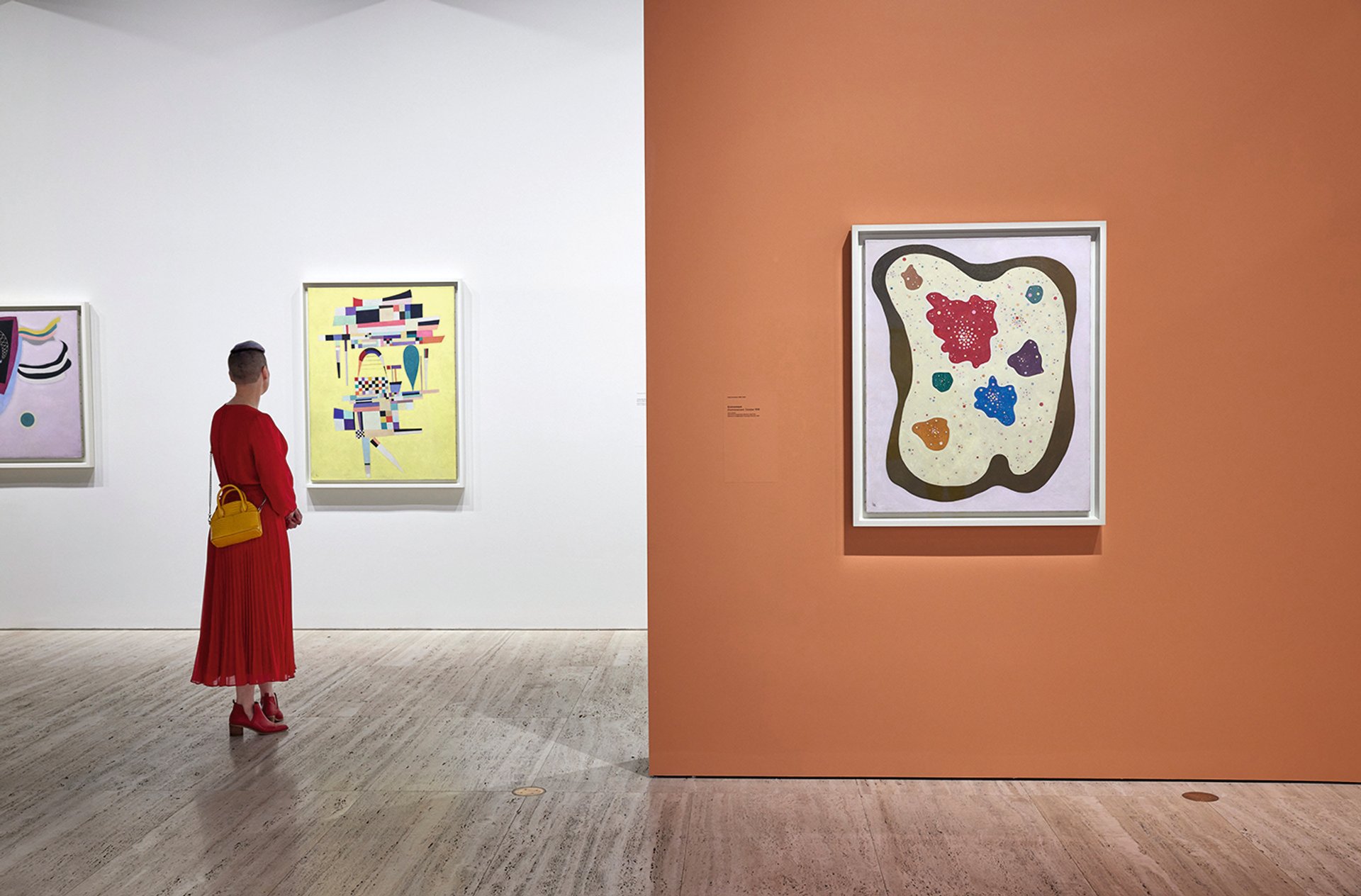
Open for business: an expansive new wing at the Art Gallery of New South Wales helped to attract 2.4 million visitors to the Sydney museum—up a million on 2019 Photo: Mim Stirling; © Art Gallery of New South Wales
Louvre Abu Dhabi’s numbers are still rising; it has hit 1.4 million, and we expect it to go up further when the other institutions on Saadiyat Island open this year and next. Investing in stunning architecture is also paying off for the Art Gallery of New South Wales in Sydney; its new wing helped it to 2.4 million visitors, a million more than in 2019.
In Lisbon, the MAC/CCB Museum of Contemporary Art had its first full year, welcoming 589,000 people; however, this was a drop from the million visitors its predecessor at the site, the Museu Coleção Berardo, achieved in 2019. Across the city, the new Centro de Art Moderna opened as part of the Fundação Calouste Gulbenkian in September, helping the overall campus to 413,000 visitors.
Elsewhere, we see signs of early rushes subsiding. Oslo’s National Museum dropped 24% from its inaugural year, while London’s reopened National Portrait Gallery only got a third more visitors than it did in 2023, despite being open for twice as long.
Euro pops
It is not just the Paris museums that are proving popular in Europe. In Madrid, the Prado attracted 3.9 million people (up 16% on 2023) and the Reina Sofia’s main site welcomed 1.5 million, up 1%. In Amsterdam, the Rijksmuseum dropped a bit to 2.5 million, down 8%, but that was coming off the back of its mega-successful Vermeer exhibition in 2023. The Van Gogh Museum added numbers, however: up 9% to 1.8 million. In Florence, the Galleria degli Uffizi got 2.9 million visitors—up 7%.
The Hermitage in St Petersburg is still 28% off what it received before Covid-19 and the war, but still better than many London museums
Russian museums saw a fall in visitor numbers after the country’s invasion of Ukraine led to the cessation of many air connections to the West. However, in 2024 we can see a slow but steady return to their previous visitor numbers. The State Russian Museum in St Petersburg reported 3.6 million visitors, up nearly a quarter on the previous year and a half on 2019. The Hermitage, also at 3.6 million, is still 28% off what it received before Covid-19 and the war but still better than many London museums.
War had a more direct impact on Israeli and Palestinian museums. Tel Aviv Museum of Art was only open for 260 days because of security concerns, resulting in a 23% decrease compared with projected figures. For the Israel Museum in Jerusalem, “the decrease in tourists visiting Israel forced the museum to go out and visit communities with its guides and staff. Group visits to the museum helped balance the group attendance figures,” says the museum. The Palestinian Museum, based in Ramallah in the West Bank, also had very low numbers of international visitors, and had to cancel or postpone events because of road closures and other security issues. Instead, it focused its attention on outreach—producing a “downloadable” exhibition called Gaza Remains the Story, which “showcases the Palestinian experience” and was staged in more than 30 locations worldwide. Visitor numbers to this and other external exhibitions (24,000) were higher than for the museum itself (17,000).
Many of the most popular US museums in 2024 hosted undeniably political art
DEI disarray
As the Israel-Hamas war wreaked havoc on museums in Palestine and Israel, culture wars in the US could soon upend its own museums—especially in Washington, DC. The fallout from the Trump administration’s squashing in January of diversity, equity and inclusion (DEI) initiatives has caused both confusion and disarray, and while the effects on visitor numbers of closing museums’ DEI offices and depoliticising exhibitions remain to be seen, it is important to note that many of the most popular US museums in 2024 hosted undeniably political art.
For example, the National Gallery of Art (3.9 million visitors, up 3% on 2023) acquired and proudly displayed a series of Robert Longo works depicting Washington, DC’s imposing government buildings; the museum acquired an image of the 6 January 2021 insurrection at the same time. At the Smithsonian American Art Museum (1.5 million visitors, including the Renwick Gallery), shows included Carrie Mae Weems, William H. Johnson’s Fighters for Freedom series and Subversive, Skilled, Sublime: Fiber Art by Women. Of course, the very existence of the National Museum of African American History and Culture could be argued as political—and, with its consistent 1.6 million visitors both last year and in 2023, it is the fourth most popular art museum in the country, and the second most visited in the nation’s capital.
New York’s Metropolitan Museum of Art comes out on top, as usual, with 5.7 million visitors to its main building (up 7% on 2023). In third place, after the National Gallery of Art, is the Museum of Modern Art (MoMA) with 2.7 million visitors (down 6% on 2023). The most popular exhibitions in New York were decidedly less political: Sleeping Beauties: Reawakening Fashion at the Met, Ed Ruscha at MoMA, and the Morgan Library and Museum’s Beatrix Potter show—which made up a third of its ticket sales for the year (attendance was up a full 81% on 2023 to 280,000). The exception here was the indisputably political Jenny Holzer show at the Solomon R. Guggenheim Museum, which brought in 344,000 people, although this was still not enough to raise the museum’s numbers—down 11% on 2023 to 766,000. Perhaps it should come as no surprise that the Guggenheim announced layoffs of 20 employees (7% of its workforce) in February 2025.
Outside New York and Washington, DC, the most popular US museums in 2024 were the Art Institute of Chicago (steady at 1.3 million visitors) and two Los Angeles institutions: the J. Paul Getty Museum (1.3 million visitors, up 4% on 2023) and the Huntington Library, Art Museum and Botanical Gardens (1.2 million visitors, up 6% on 2023).
Latin American success
South of the US, several museums in Mexico and Brazil hosted at least one million people last year. Atop the list was Mexico City’s Museo Nacional de Antropología with 3.7 million visitors—a record for the expansive museum of pre-Columbian archaeological artefacts, topping MoMA’s numbers by a whole million. Only a few miles away, the private museum Museo Soumaya came in second in Mexico with 2.3 million visitors. (The neighbouring contemporary art centre Museo Jumex chose not to participate in our survey this year.)
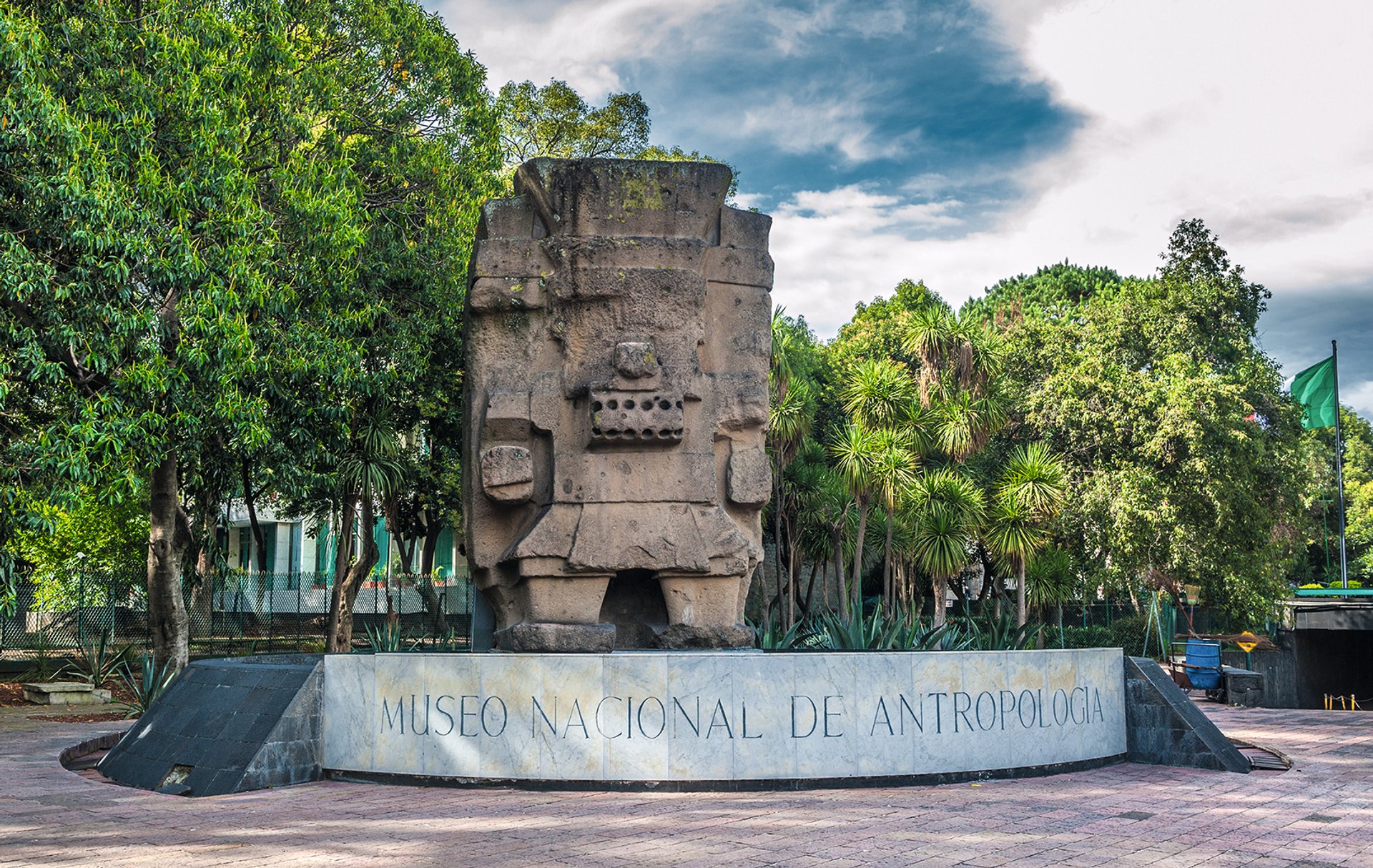
Mexico City’s Museo Nacional de Antropología welcomed 3.7 million visitors in 2024, setting a museum record Konstantin Kalishko
Three other Mexican museums hosted extremely successful solo shows in 2024. Damián Ortega’s first retrospective in his native country at the Museo del Palacio de Bellas Artes brought in 234,000 people, more than a quarter of the museum’s total attendees for the year. El Museo de Arte Contemporáneo de Monterrey put on a very successful Dan Flavin show (120,000 visitors), the artist’s first in the country, aiding total museum attendance to shoot up 27% on 2023 to 259,000. And back in Mexico City, at the Museo Universitario de Arte Contemporáneo, the Colombian painter Beatriz González’s exhibition had 58,000 visitors—helping bring total numbers up 31% on 2023 to 379,000.
While the news in Mexico was overwhelmingly positive, Brazilian museums were more of a mixed bag. Many of those in the southern state of Rio Grande do Sul were greatly affected by the country’s worst flooding in almost a century, but even in Rio de Janeiro, São Paulo and Belo Horizonte, visitor numbers appeared to fluctuate.
CCBB Rio’s numbers were a far cry from the 2.6 million it received in 2019
The numbers of the various branches of Centro Cultural Banco do Brasil (CCBB) were particularly noticeable, especially compared with their pre-
pandemic attendance. Although CCBB Rio welcomed an impressive 362,000 visitors for its show of Hiromi Nagakura’s photographs of the Amazon, its overall numbers were down 7% on 2023 to 1.2 million (and a far cry from the 2.6 million it received in 2019). CCBB Belo Horizonte was down 29% on 2023 to one million. CCBB São Paulo, meanwhile, is still recovering from Covid-19 with 634,000 visitors in 2024—significantly less than it had in 2019. CCBB Brasília, however, was up 12% on 2023 with 573,000 visitors—aided by a group exhibition of immersive installations and digital projects related to the sun (155,000 attendees).
In fact, the two Brazilian museums that made the most gains in attendance owe their numbers to their hugely popular immersive exhibitions. Museu Oscar Niemeyer in Curitiba saw attendance rise 41% on 2023 to 712,000; its exhibition by the Portuguese artist Joana Vasconcelos sold a whopping 600,000 tickets. And at the Pinacoteca de São Paulo, a show by the Argentine artist Marta Minujín (with its neon colours, giant soft sculptures and interactive rooms—including a very fast and almost dangerous slide) brought in 305,000 people, almost half of last year’s total attendance of 810,000. These two museums in particular have smashed their pre-pandemic numbers; Museu Oscar Niemeyer is up 89% on 2019, while the Pinacoteca de São Paulo is up 50%.
So, what can we learn from all this? Maybe all it takes to get a struggling museum back on its feet is a well-planned, well-executed and truly artful immersive exhibition. Or, you know, cute things—like Peter Rabbit, AI kittens and Taylor Swift.
• Venues marked with a dagger (†) indicate institutions with more than one building. We have separated the venues to give a more accurate reflection of footfall. The institutions’ additional venues and combined totals are: The Met (Met Cloisters 261,251; total 5,988,509); Shanghai Museum (total East and People’s Square 6,578,628); Reina Sofia (Palacio de Velázquez 319,706; total 1,856,811); National Gallery of Victoria (Ian Potter Centre 552,682; total 2,840,257); Smithsonian American Art Museum (Renwick Gallery 248,414; total 1,521,864); Albertina (Modern 186,259, Klosterneuburg 65,626; total 1,321,385); National Galleries Scotland (Modern One 210,714, Modern Two 117,813, Portrait 288,215; total with National 2,615,938); Getty (Getty Villa 453,058; total with Getty Center 1,754,390); Belvedere (Lower Belvedere 298,090; Belvedere 21 85,603; total with Upper Belvedere 1,867,915) *The Met revised its 2019 visitor number to 4,898,474 due to a changed counting methodology **In 2019 we reported Reina Sofia venues as a combined figure, but we now split them to be consistent with other venues. ***National Portrait Gallery, Washington, DC, and Smithsonian American Art Museum share a building, hence report the same figure. We have therefore ranked them equally and counted these visitors only once in our overall totals.
• With additional reporting by Lisa Movius. Research by Allison C. Meier and Alexandra Timonina



